Cheonghak-dong Etiquette School Seonbi Seodang (청학동예절학교 선비서당)
14.4Km 2024-03-04
60-10 Wonmuk-gil, Cheongam-myeon, Hadong-gun, Gyeongsangnam-do
Cheonghak-dong, located at the foot of the ridge facing Hadong on Jirisan Mountain, is a village inhabited by 200 residents from thirty families. It hosts several seodangs (village schools), among which Seonbi Seodang stands out for its educational programs focusing on etiquette, character development, and Chinese characters. Additionally, the village offers a variety of experience programs, including traditional culture, farming activities, and perseverance training.
Sancheongyulsuwon (산청율수원)
14.6Km 2024-12-19
36 , Sindeunggahoe-ro, Sancheong-gun, Gyeongsangnam-do
+82-55-974-0221, +82-10-9802-1132
Sancheong Yulsuwon is a hanok stay in Sancheong, Gyeongsangnam-do, which has been remodelled from the old Goheon yangban house - with the aim not just of providing accomodation but also of promoting hanok culture. The different buildings are arranged according to feng shui, with Yeongsumun (the gate house), the inner and outer Sarangchae, the dining room and the bathhouse, all arranged protectively around the Anchae or women’s house. Bathrooms and kitchens are installed in all rooms, and the Hagyejae(anchae) has a numaru or upper floor - from where the view is beautiful. There is a red clay Korean sauna in Seoljodang(bathhouse). Nearby tourist attractions include Daewonsa Valley, Namsayedamchon, and Jeongchwiam.
Jirisan Chilseongyegok Valley (칠선계곡(지리산))
16.2Km 2022-07-29
Chuseong-ri, Hamnyang-gun, Gyeongsangnam-do
+82-55-970-1000
Chilseongyegok Valley is the most beautiful valley in Jirisan Mountain, and is one of the top three valleys in the nation, along with Cheonbuldonggyegok Valley in Seoraksan Mountain and Tamnagyegok Valley in Hallasan Mountain. The 16-kilometer valley stretching from Uitan of Macheon-myeon to Cheonwangbong Peak is characterized by very tough topography but beautiful scenery and is the only remaining primeval forest of Jirisan Mountain. It is also dotted with seven waterfalls and 33 ponds. The hike becomes more difficult as the trail enters the valley. Because the valley has taken many lives, some people call it "The Valley of Death." For that reason, visitors must apply in advance and hike with a guide. The trail in Chilseon Valley is a 9.4-kilometer course from Chuseong Village in Macheon-myeon to Cheonwangbong Peak, which does not follow the natural valley, due to the valley's steep and dangerous features. Starting from Chuseong Village, the trail passes Yongso Pond, Jujiteo Site, Chuseongmang Rock, Seonnyeotang Pond, Ongnyeotang Pond, Biseondam, Chilseonpokpo Falls, Daeryukpokpo Falls, Samcheungpokpo Falls and Mapokpo Falls, all before reaching Cheonwangbong Peak.
Sancheong Donguibogam Village (산청 동의보감촌)
16.8Km 2025-10-27
45-6, Donguibogam-ro 555beon-gil, Geumseo-myeon, Sancheong-gun, Gyeongsangnam-do
Enjoy various traditional Korean medicine in one place!
Sancheong Donguibogam Village is home to the Museum of Sancheong Korean Medicine, Korea's first traditional Korean medicine-themed museum created in 2007; the Korean Medicine Theme Park; the Sancheong Medicinal Herb Hall; the 'Ki' Experience Hall; the Korean Medicine Recreational Forest and the Korean medical clinics. The village allows you to experience 'healing' moments through traditional medicine. Here, you can learn diverse knowledge about traditional Korean medicine, organized by Heo Jun, the author of Donguibogam (medical encyclopedia). If you are suffering from chronic stress, look no further than Sancheong Donguibogam Village.
Sancheong Medicinal Herb Festival (산청한방약초축제)
16.8Km 2025-07-11
61 Donguibogam-ro 555beon-gil, Geumseo-myeon, Sancheong-gun, Gyeongsangnam-do
+82-55-970-6670
The Sancheong Herbal Medicinal Festival is a celebration for those interested in traditional herbal medicine. Donguibogam (Principles and Practice of Eastern Medicine) and its author, Heo Jun, are highly regarded in Korean medicine. Sancheong, where Heo Jun studied, is home to Jirisan Mountain, which is often seen as a treasure trove by Korean medicine doctors due to being a habitat of over 1,000 species of medicinal herbs. The festival features Korean medicine clinics offering treatments like acupuncture, while the festival square is transformed into an herbal garden with photo zones, tea drinking spots, spaces for making herbal flower pots, and exhibitions and sales of herbal flower pot goods. Visitors can also participate in making herbal sweet rice puffs, nostalgic herbal dalgona candy, herbal cocktails, and herbal tea brewed in a large decoction pot.
◎ Dongui bogam
Dongui bogam is a medical encyclopedia completed in 1610, written by Heo Jun after a meticulous study and observation of medical books and practices of China and Joseon. It is considered the best medical encyclopedia in the East and was registered as a UNESCO Memory of the World in 2009.
Samseonggung (삼성궁)
17.4Km 2024-02-21
86-15 Samseonggung-gil, Cheongam-myeon, Hadong-gun, Gyeongsangnam-do
Samseonggung is a Taoist shrine located at 850 meters above sea level on Jirisan Mountain. It serves as a spiritual hub for practicing Sinseondo, embodying traditional Korean culture. In 1983, Kang Min-ju (Taoist Priest Hanpul), along with his disciples, restored the sodo, a sacred altar from the Gojoseon period. This shrine stands as a revered sanctuary, honoring the primal ancestors of the Korean people: Hwanin (Lord of Heaven), Hwanung (Supreme Divine Regent), and Dangun (legendary founder of Gojoseon).
Jinyangho Park (진양호 공원 (진양호 전망대, 동물원))
19.2Km 2024-08-28
96-6 Namgang-ro 1beon-gil, Jinju-si, Gyeongsangnam-do
Jinyangho Park is situated around Jinyangho Lake, the only manmade lake in Gyeongsangnam-do. The park is complete with a range of facilities and amenities, including a zoo that is home to tigers, lions, bears, eagles, giraffes, and many more animals. Another popular attraction within the park is the observatory, a modern three-story building that offers views of the surrounding landscape. The park has been used as a filming site, and is a common date location for locals.
Jinju Bullfighting Arena (진주소싸움경기장)
19.3Km 2024-02-28
100 Panmunodong-gil, Jinju-si, Gyeongsangnam-do
Jinju Traditional Bullfighting Arena was established with the aim of preserving and fostering Jinju's traditional folk culture of bullfighting. With a seating capacity of 3,000, the arena is strategically situated in proximity to the expansive Jinyangho Park, seamlessly blending with its picturesque scenery. This venue annually hosts national competitions and holds regular Saturday bullfighting matches, providing visitors with a unique and captivating spectacle.
Hayeonok (하연옥)
19.4Km 2024-02-28
7 Namgang-ro 673beon-gil, Jinju-si, Gyeongsangnam-do
Hayeonok, a naengmyeon (cold buckwheat noodles) specialty restaurant, is located near Chokseongnu Pavilion, a cultural heritage in Jinju. The signature dish is Jinju bibim naengmyeon (Jinju spicy buckwheat noodles). What sets their naengmyeon apart is the unique addition of yukjeon (pan-fried battered beef) as toppings. Beyond naengmyeon, they also serve bibimbap, gomtang (beef bone soup), and galbi. The restaurant's proximity to attractions like the Jinju National Museum and Jinjuseong Fortress makes it an ideal destination for both dining and exploration.
Seoamjeongsa Temple (서암정사(함양))
19.8Km 2024-02-21
27-79 Gwangjeom-gil, Macheon-myeon, Hamyang-gun, Gyeongsangnam-do
Seoamjeongsa Temple belongs to Byeoksongsa Temple, which is at the entrance of the Chilseongyegok Valley of Jirisan Mountain. Monk Woneung rebuilt Byeoksongsa Temple, which had been damaged during the Korean War in 1950. This hermitage features the Buddha statues Woneung carved into the natural bedrock, a grotto sanctuary with statues of the Pure Land, Daebanggwangmun Gate, and Sajagul Cave.
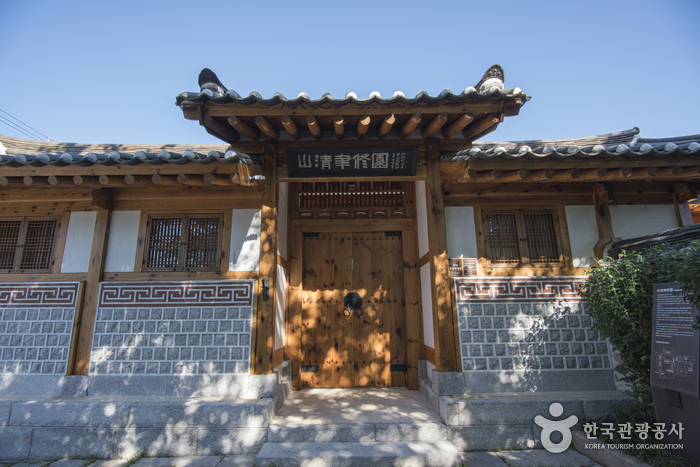
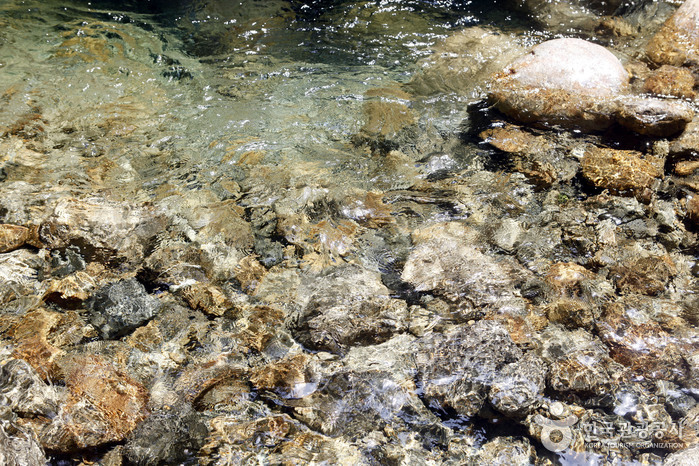
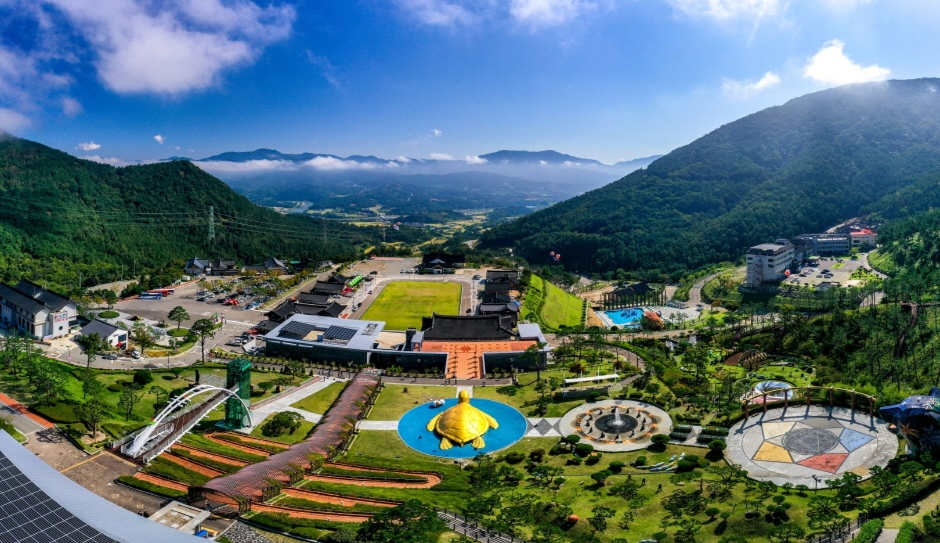
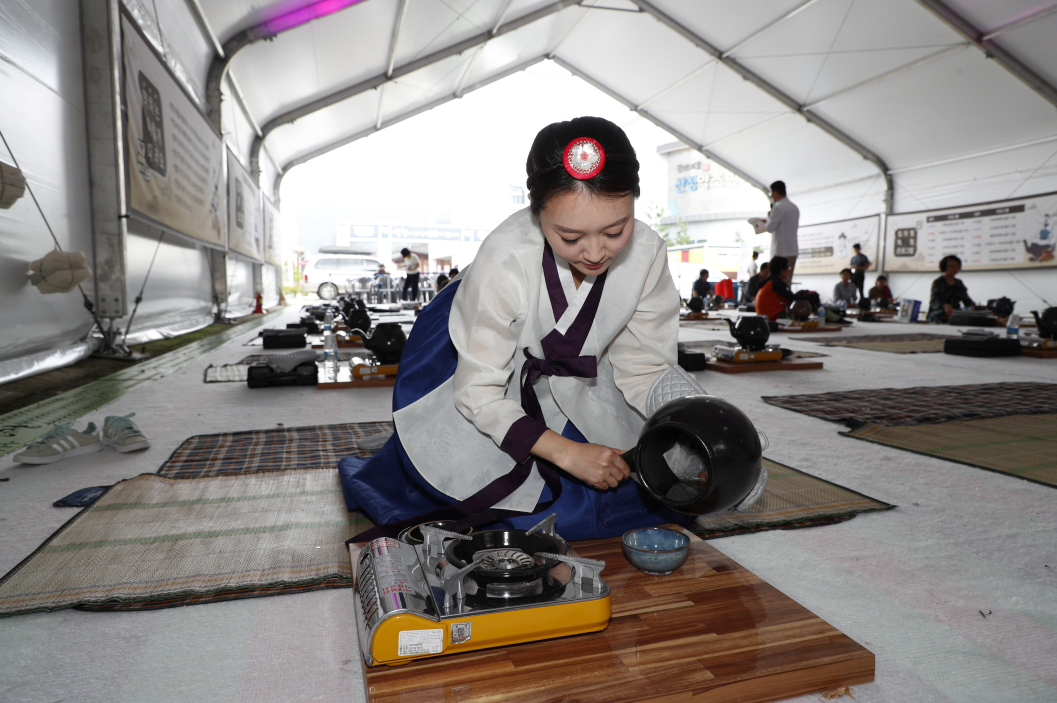

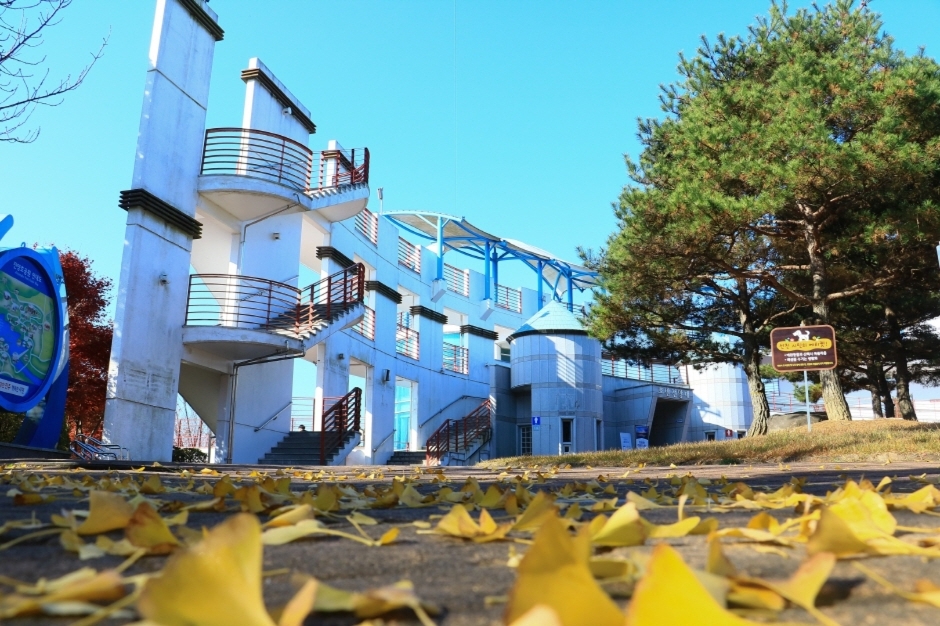
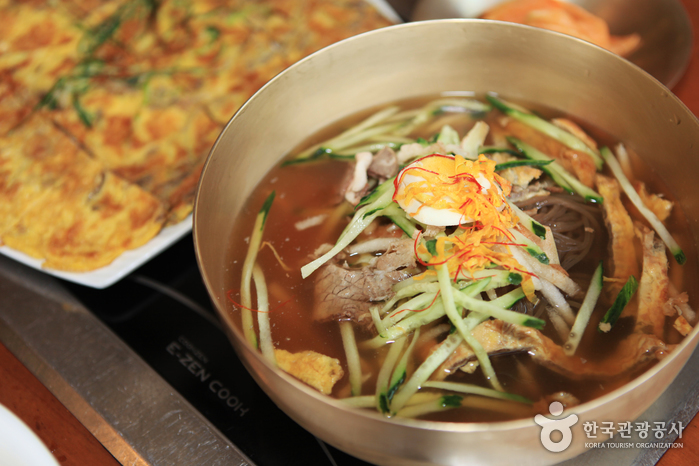
 English
English
 한국어
한국어 日本語
日本語 中文(简体)
中文(简体) Deutsch
Deutsch Français
Français Español
Español Русский
Русский